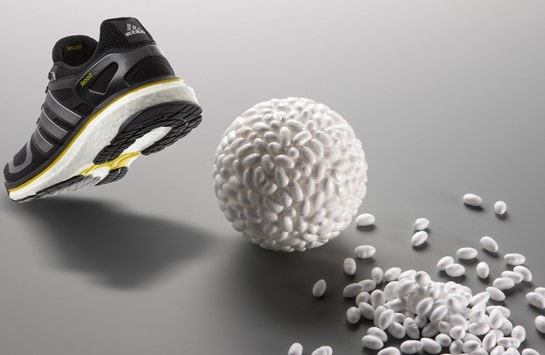Additive manufacturing has a multitude of options in terms of materials, which are adjusted according to the needs of each project. Thermoplastic polyurethane, or commonly known as TPU, is one of the most innovative materials with the highest elastomeric behavior on the market. But, what benefits and characteristics does it bring to additive manufacturing projects?
Thermoplastic polyurethane gives the pieces a high resistance to abrasions
The thermoplastic polyurethane is obtained from a base of polyester and polyether or polycarbonate, from the reaction of these polyols. If we focus on the main characteristics provided by the material, the excellent flexibility, durability and resistance that TPU has against abrasion stands out.
In addition to its good resistance to abrasion, thermoplastic polyurethane has fire-retardant properties and, therefore, makes it possible to apply it in the automotive sector, for example, for bodywork parts such as steering wheels or headrests. Other properties it presents are its microbial capacity and resistance to ultraviolet rays.
The main characteristic of thermoplastic polyurethane, which is flexibility, means that the pieces created with this material have a high damping capacity and, likewise, they also have a long useful life without losing capacities and much more improved resistance to deformation than other materials. .
On the other hand, it should be noted that thermoplastic polyurethane is a sustainable material, since its composition does not contain plasticizers. Contrary to what happens with other types of rubber, TPU is recyclable, since, when heated, it can be used again for new projects. The fact that it is a material that does not contain plasticizers allows it to be easily colored with the most common colouring.
Highlights the resistance of thermoplastic polyurethane to extreme temperatures
Thermoplastic polyurethane offers parts created by additive manufacturing high strength at extreme temperatures. Withstanding large differences in temperature makes it a suitable material to apply in a greater number of sectors.
In the case of cold, the TPU is capable of resisting temperatures down to -6 °C, maintaining its flexibility intact even when bent at 60 degree angles. This makes it possible, for example, to apply it to the joints or weather stripping of refrigerators without the risk of the part suffering fissures or cracks.
On the other hand, thermoplastic polyurethane is also capable of withstanding high temperatures of between 80 – 120 °C without its properties being affected. This characteristic makes it a material that can be applied in industrial environments, where there are pieces that have to be able to withstand high-temperature environments for long periods of time. For example, TPU can be used in robotic grippers or machine rubbers.
These are just some of the properties that thermoplastic polyurethane offers to additive manufacturing parts. Pantur has recently added TPU to its catalog of materials. In this way, it can be better adjusted to the needs of its clients depending on each project.

